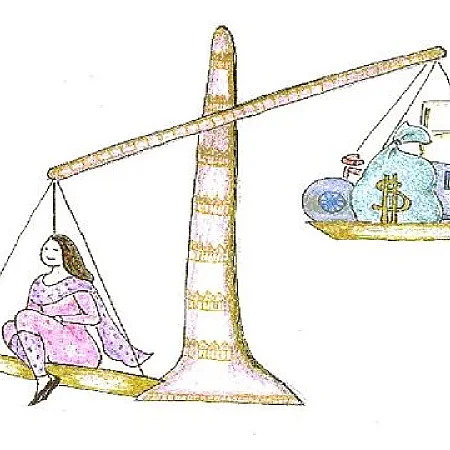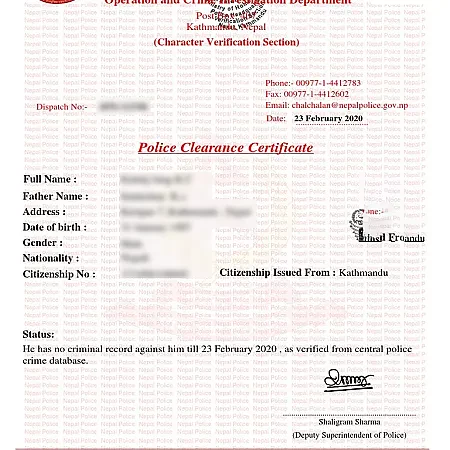Table of Contents
- Introduction to Intellectual Property in Nepal
- Types of Intellectual Property Recognized in Nepal
- Patents
- Trademarks
- Copyrights
- Industrial Designs
- Legal Framework Governing IP Rights in Nepal
- Registration Processes for Intellectual Property
- Patent Registration Process
- Trademark Registration Process
- Copyright Registration Process
- Design Registration Process
- Legal Protections for IP Rights in Nepal
- IP Claims and Dispute Resolution Procedures
- Practical Tips for IP Protection in Nepal
- Conclusion
Introduction to Intellectual Property in Nepal
In today's knowledge-based economy, intellectual property (IP) has become one of the most valuable assets for businesses, creators, and innovators in Nepal. Whether you're an entrepreneur launching a new product, an artist creating original works, or a business establishing your brand, understanding intellectual property law in Nepal is essential for protecting your creative and commercial interests.
This comprehensive guide will walk you through the various types of intellectual property recognized in Nepal, the legal framework governing IP rights, registration procedures, and the claims process when your IP rights are infringed. By the end of this article, you'll have a clear understanding of how to protect your intellectual assets and take appropriate action when violations occur.
Types of Intellectual Property Recognized in Nepal
Nepal's legal system recognizes four main categories of intellectual property, each with its own set of rights, registration processes, and protection mechanisms. Understanding these distinctions is crucial for determining how to best protect your creative and innovative works.
Patents
Patents protect inventions and innovations, granting exclusive rights to the inventor for a limited period. In Nepal, patents are governed by the Patent, Design and Trademark Act, 2022, which replaced the earlier 1965 legislation.
Key aspects of patent protection in Nepal include:
- Protection for new inventions involving an inventive step and industrial applicability
- Exclusive rights to prevent others from making, using, or selling the patented invention
- Protection period of 20 years from the filing date
- Requirement for annual maintenance fees to keep the patent in force
Trademarks
Trademarks protect distinctive signs, symbols, words, or combinations thereof that identify and distinguish goods or services of one entity from those of others. For businesses in Nepal, trademark protection is essential for brand recognition and market positioning.
Important elements of trademark protection include:
- Protection for marks capable of distinguishing goods or services
- Registration with the Department of Industry
- Protection period of 10 years, renewable indefinitely
- Rights to prevent unauthorized use of similar marks that may cause confusion
Copyrights
Copyright protection in Nepal covers original literary, artistic, musical, and dramatic works, as well as software and databases. Unlike patents and trademarks, copyright protection is automatic upon creation of the work, though registration provides additional benefits.
Key features of copyright protection include:
- Automatic protection upon fixation of the work in a tangible medium
- Protection lasting for the creator's lifetime plus 50 years
- Rights to reproduce, distribute, perform, display, and create derivative works
- No requirement for registration, though voluntary registration is available
Industrial Designs
Industrial designs protect the ornamental or aesthetic aspects of an article, including its shape, configuration, patterns, or colors. This protection is particularly important for manufacturers and designers in Nepal's growing industrial sector.
Essential aspects of design protection include:
- Protection for designs that are new and original
- Registration with the Department of Industry
- Protection period of 10 years, renewable for additional periods
- Rights to prevent copying or imitation of the protected design
Legal Framework Governing IP Rights in Nepal
Nepal's intellectual property regime is governed by a combination of national legislation and international treaties, creating a comprehensive framework for IP protection and enforcement.
National Legislation
The primary laws governing intellectual property in Nepal include:
-
The Patent, Design and Trademark Act, 2022: This recent legislation modernized Nepal's approach to patents, designs, and trademarks, aligning them more closely with international standards. The Act introduced streamlined procedures for registration and enhanced enforcement mechanisms.
-
The Copyright Act, 2002: This law governs copyright protection in Nepal, establishing the rights of creators and providing remedies for infringement. The Act was amended in 2006 to strengthen enforcement provisions and address emerging challenges in the digital environment.
-
The Foreign Investment and Technology Transfer Act, 2019: This legislation includes provisions related to technology transfer and intellectual property rights in the context of foreign investment.
International Treaties
Nepal is a member of the World Intellectual Property Organization (WIPO) and has signed several international treaties, including:
-
The Paris Convention for the Protection of Industrial Property: Nepal acceded to this convention in 2001, providing national treatment to foreign IP rights holders and establishing priority rights for patent and trademark applications.
-
The Berne Convention for the Protection of Literary and Artistic Works: Nepal joined this convention in 2004, extending copyright protection to foreign works and establishing minimum standards of protection.
-
The TRIPS Agreement (Agreement on Trade-Related Aspects of Intellectual Property Rights): As a member of the WTO, Nepal is bound by the TRIPS Agreement, which sets minimum standards for IP protection and enforcement.
These international commitments have significantly influenced Nepal's domestic IP legislation and continue to shape the development of its intellectual property regime.
Registration Processes for Intellectual Property
While copyright protection is automatic in Nepal, patents, trademarks, and industrial designs require registration to secure full legal protection. Each type of IP follows a specific registration process administered by different government bodies.
Patent Registration Process
The Department of Industry, under the Ministry of Industry, Commerce and Supplies, handles patent registrations in Nepal. The patent registration process typically involves the following steps:
-
Filing the Application: Submit a patent application to the Department of Industry, including a complete specification of the invention, claims, drawings (if applicable), and an abstract.
-
Formality Examination: The Department examines the application for compliance with formal requirements, such as proper formatting and complete documentation.
-
Publication: After formal examination, the patent application is published in the Industrial Property Bulletin to invite public opposition.
-
Substantive Examination: The application undergoes substantive examination to determine if the invention meets the patentability criteria of novelty, inventive step, and industrial applicability.
-
Grant of Patent: If the application satisfies all requirements, the patent is granted and published in the Industrial Property Bulletin.
The entire process typically takes 2-3 years, though expedited examination may be available in certain circumstances.
Trademark Registration Process
Trademark registration in Nepal follows these key steps:
-
Trademark Search: Conduct a search of existing trademarks to ensure the proposed mark is available for registration.
-
Filing the Application: Submit a trademark application to the Department of Industry, including a clear representation of the mark, list of goods/services, and classification according to the Nice Classification.
-
Formality Examination: The Department examines the application for compliance with formal requirements.
-
Publication: The application is published in the Industrial Property Bulletin to invite public opposition within 90 days.
-
Registration: If no opposition is filed or if opposition is resolved in favor of the applicant, the trademark is registered and a certificate of registration is issued.
The trademark registration process typically takes 12-18 months in Nepal.
Copyright Registration Process
While copyright protection is automatic in Nepal, voluntary registration is available through the Copyright Registrar's Office. The registration process includes:
-
Application Submission: Submit an application for copyright registration along with copies of the work and prescribed fees.
-
Examination: The Copyright Registrar's Office examines the application to ensure all requirements are met.
-
Registration: Upon successful examination, the work is entered into the copyright register, and a certificate of registration is issued.
Copyright registration in Nepal typically takes 1-2 months and provides prima facie evidence of ownership, which can be valuable in infringement proceedings.
Design Registration Process
The registration process for industrial designs in Nepal involves:
-
Application Submission: Submit an application to the Department of Industry, including representations of the design and a description of the article to which it will be applied.
-
Formality Examination: The Department examines the application for compliance with formal requirements.
-
Publication: The application is published in the Industrial Property Bulletin to invite public opposition.
-
Registration: If no opposition is filed or if opposition is resolved in favor of the applicant, the design is registered and a certificate of registration is issued.
The design registration process typically takes 12-18 months in Nepal.
Legal Protections for IP Rights in Nepal
Nepal's legal framework provides both civil and criminal remedies for intellectual property infringement, offering multiple avenues for rights holders to enforce their IP rights.
Civil Remedies
Civil remedies for IP infringement in Nepal include:
-
Injunctions: Courts can grant temporary or permanent injunctions to prevent ongoing or imminent infringement of IP rights.
-
Damages: Rights holders can claim monetary compensation for losses suffered due to infringement, including actual damages and, in some cases, statutory damages.
-
Account of Profits: Courts may order infringers to disgorge profits earned from the infringing activity.
-
Delivery Up: Courts can order the surrender of infringing goods or materials to the rights holder.
-
Declaration of Rights: Courts can issue declarations confirming the existence and validity of IP rights.
Criminal Penalties
Certain IP violations in Nepal carry criminal penalties, including:
-
Imprisonment: For willful trademark counterfeiting and copyright piracy, offenders may face imprisonment of up to three years.
-
Fines: Criminal offenses may be punishable by fines ranging from NPR 10,000 to NPR 100,000, depending on the nature and severity of the violation.
-
Seizure and Forfeiture: Infringing goods and materials may be seized and forfeited to the state.
Border Measures
Nepal has implemented border measures to prevent the importation of infringing goods. Rights holders can record their IP rights with customs authorities and request the detention of suspected infringing imports.
IP Claims and Dispute Resolution Procedures
When intellectual property rights are infringed in Nepal, rights holders have several options for seeking redress. The appropriate course of action depends on the nature of the infringement, the evidence available, and the desired outcome.
Filing Infringement Claims
The process for filing IP infringement claims typically involves:
-
Evidence Collection: Gather evidence of the infringement, including samples of infringing products, photographs, and documentation of the infringing activity.
-
Cease and Desist Notice: Send a formal notice to the alleged infringer demanding cessation of the infringing activity and, where appropriate, payment of damages.
-
Filing a Complaint: If the infringer does not comply with the cease and desist notice, file a complaint with the appropriate court or administrative body.
-
Preliminary Injunction: Request a preliminary injunction to prevent further infringement while the case is pending.
-
Trial: Present evidence and arguments at trial to establish infringement and seek appropriate remedies.
Dispute Resolution Mechanisms
In addition to litigation, Nepal offers alternative dispute resolution mechanisms for IP disputes:
-
Mediation: Parties can voluntarily engage in mediation to resolve disputes with the assistance of a neutral third party.
-
Arbitration: Certain IP disputes may be resolved through arbitration, particularly when the parties have included an arbitration clause in their agreements.
-
Administrative Proceedings: Some IP disputes, particularly those related to trademark oppositions and cancellations, can be resolved through administrative proceedings before the Department of Industry.
Enforcement Challenges
Despite having a comprehensive legal framework, IP enforcement in Nepal faces several challenges:
-
Limited Awareness: Many businesses and individuals in Nepal have limited awareness of intellectual property rights and the importance of respecting them.
-
Resource Constraints: Enforcement agencies and courts often face resource constraints that can limit their effectiveness in addressing IP violations.
-
Procedural Delays: Legal proceedings in Nepal can be time-consuming, with cases often taking years to resolve.
-
Border Control Issues: Nepal's porous borders and limited customs resources make it challenging to prevent the importation of infringing goods.
Practical Tips for IP Protection in Nepal
To effectively protect your intellectual property in Nepal, consider the following practical tips:
-
Early Registration: File applications for patents, trademarks, and designs as early as possible to secure priority rights.
-
Comprehensive Search: Conduct thorough searches before filing applications to ensure your IP does not infringe existing rights.
-
Proper Documentation: Maintain detailed records of your IP creation and development process, including dates, drafts, and revisions.
-
Regular Monitoring: Regularly monitor the market for potential infringements of your IP rights.
-
Strategic Enforcement: Develop a strategic approach to enforcement, prioritizing actions based on the impact of infringement and the likelihood of success.
-
Professional Assistance: Engage qualified IP professionals to assist with registration, enforcement, and dispute resolution.
-
International Protection: Consider seeking international protection for your IP through treaties such as the Patent Cooperation Treaty (PCT) or Madrid System, if applicable to your business needs.
-
Employee Education: Educate your employees about the importance of IP protection and their responsibilities in safeguarding the company's intellectual assets.
Conclusion
Intellectual property law in Nepal has evolved significantly in recent years, providing a robust framework for protecting patents, trademarks, copyrights, and industrial designs. By understanding the types of IP recognized in Nepal, the registration processes, and the enforcement mechanisms available, businesses, creators, and innovators can better protect their valuable intellectual assets.
While challenges remain in enforcement and awareness, Nepal's commitment to international IP standards and its ongoing legal reforms demonstrate a positive trajectory for IP protection in the country. By taking proactive steps to register and monitor their IP rights, rights holders can maximize the value of their intellectual property and contribute to Nepal's growing innovation economy.
Whether you're a local entrepreneur, an international business operating in Nepal, or a creator seeking to protect your works, understanding and leveraging intellectual property law is essential for success in today's competitive marketplace.







-thumb.webp)
-thumb.webp)

